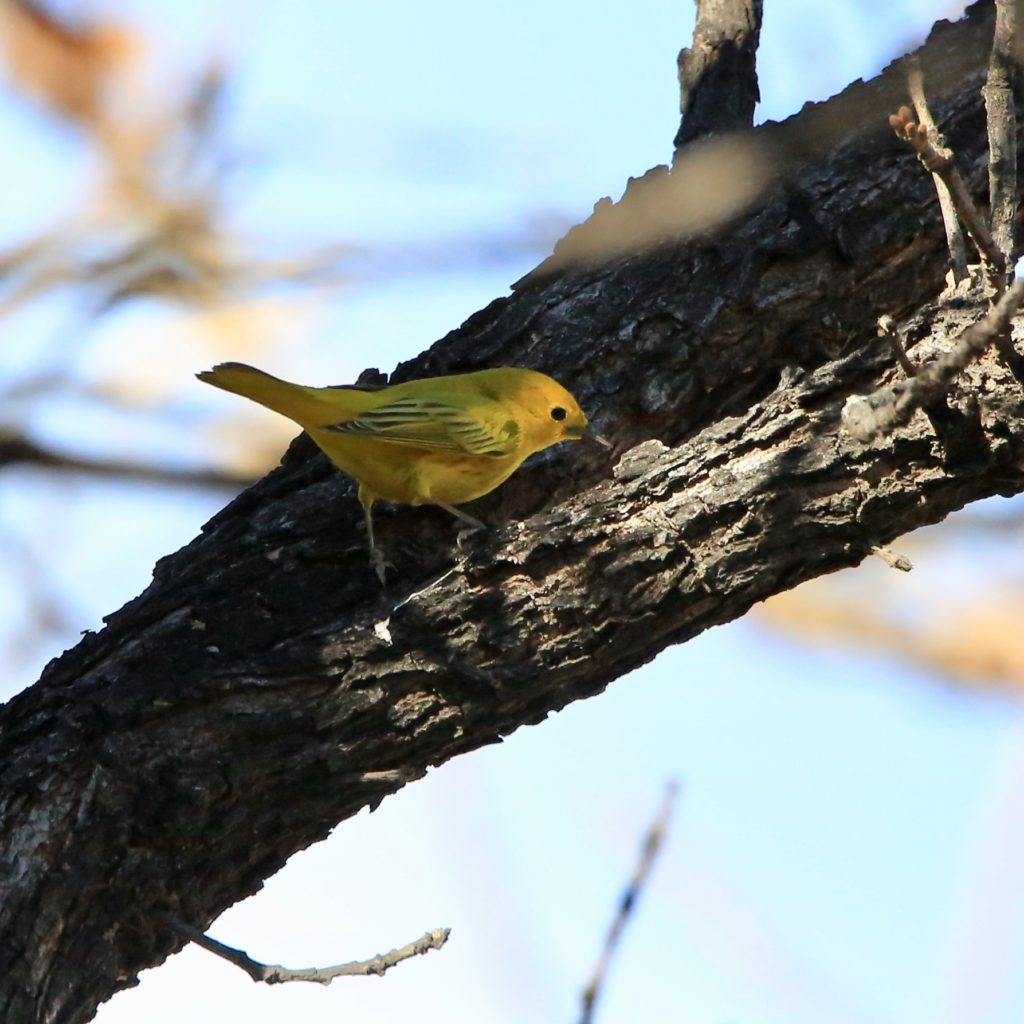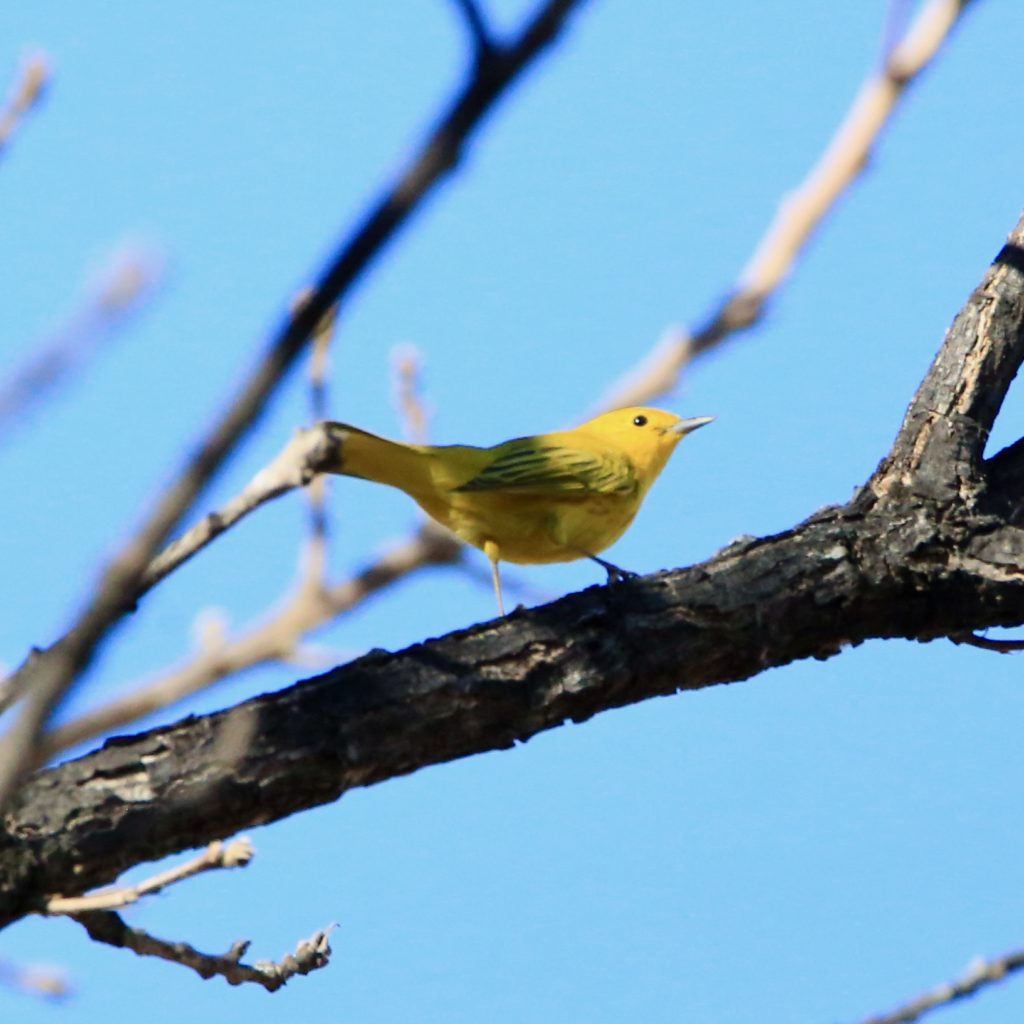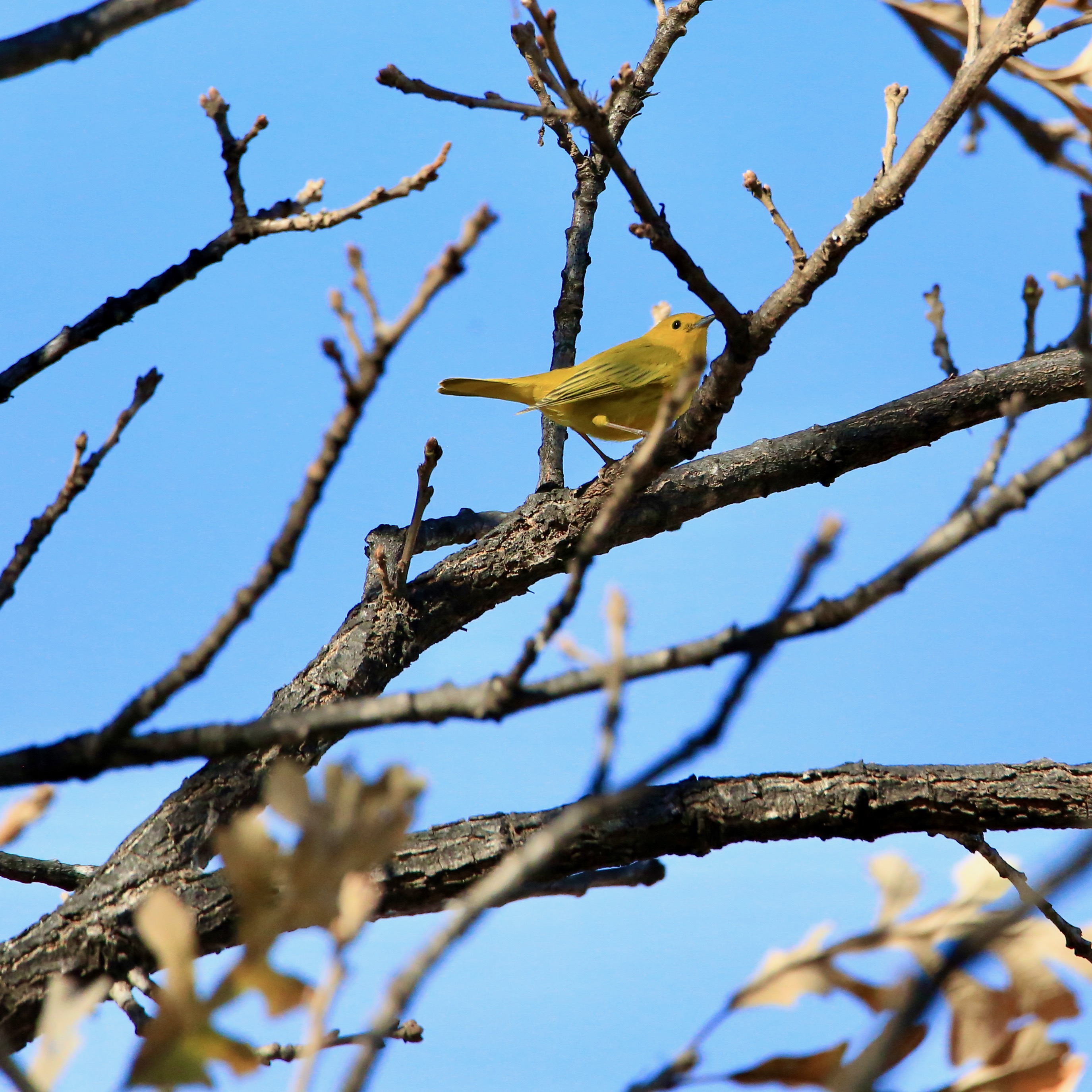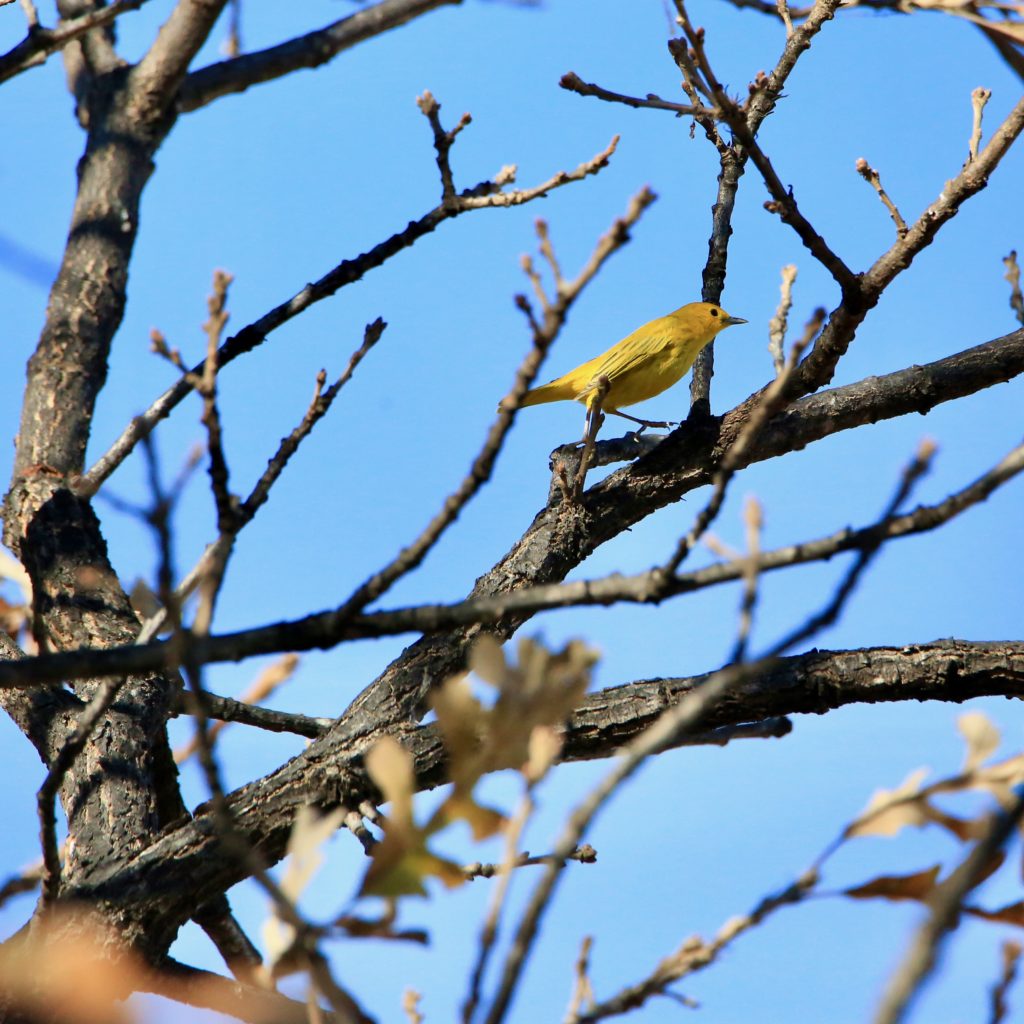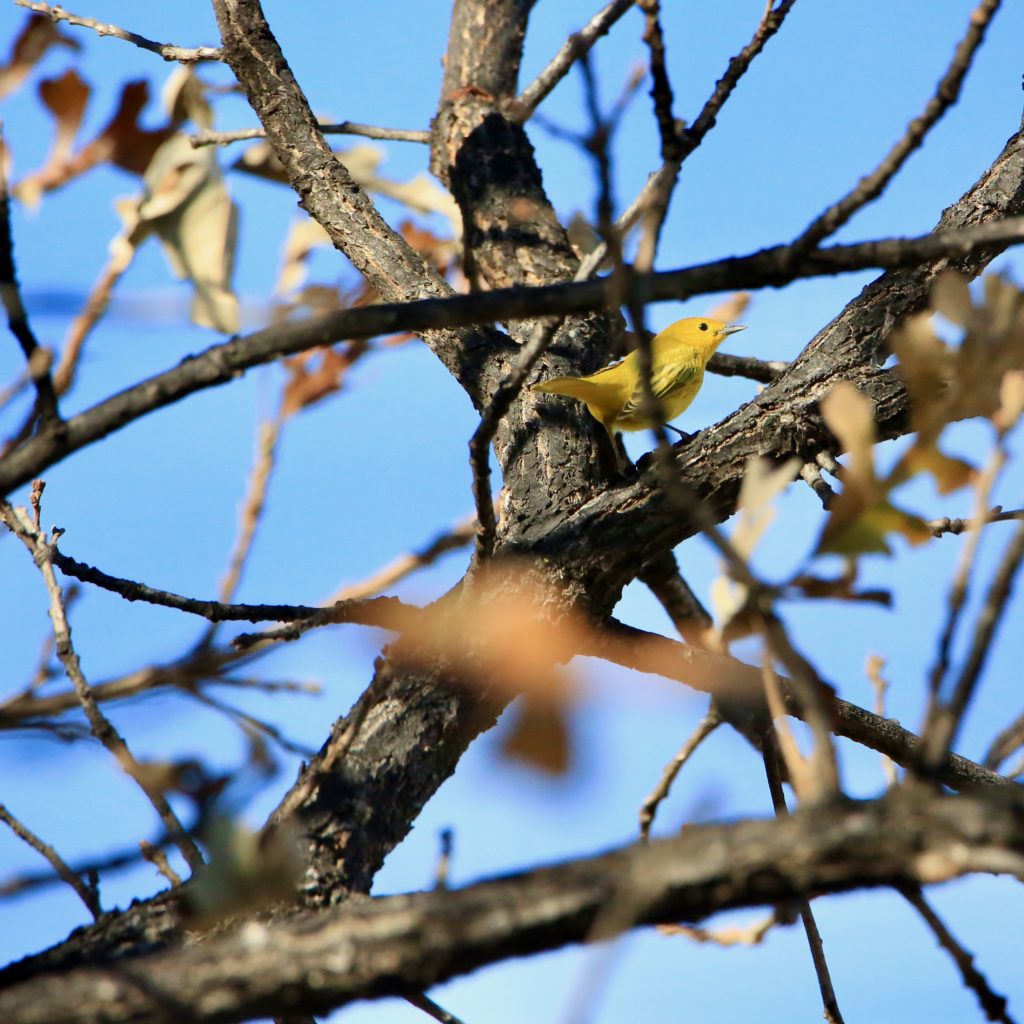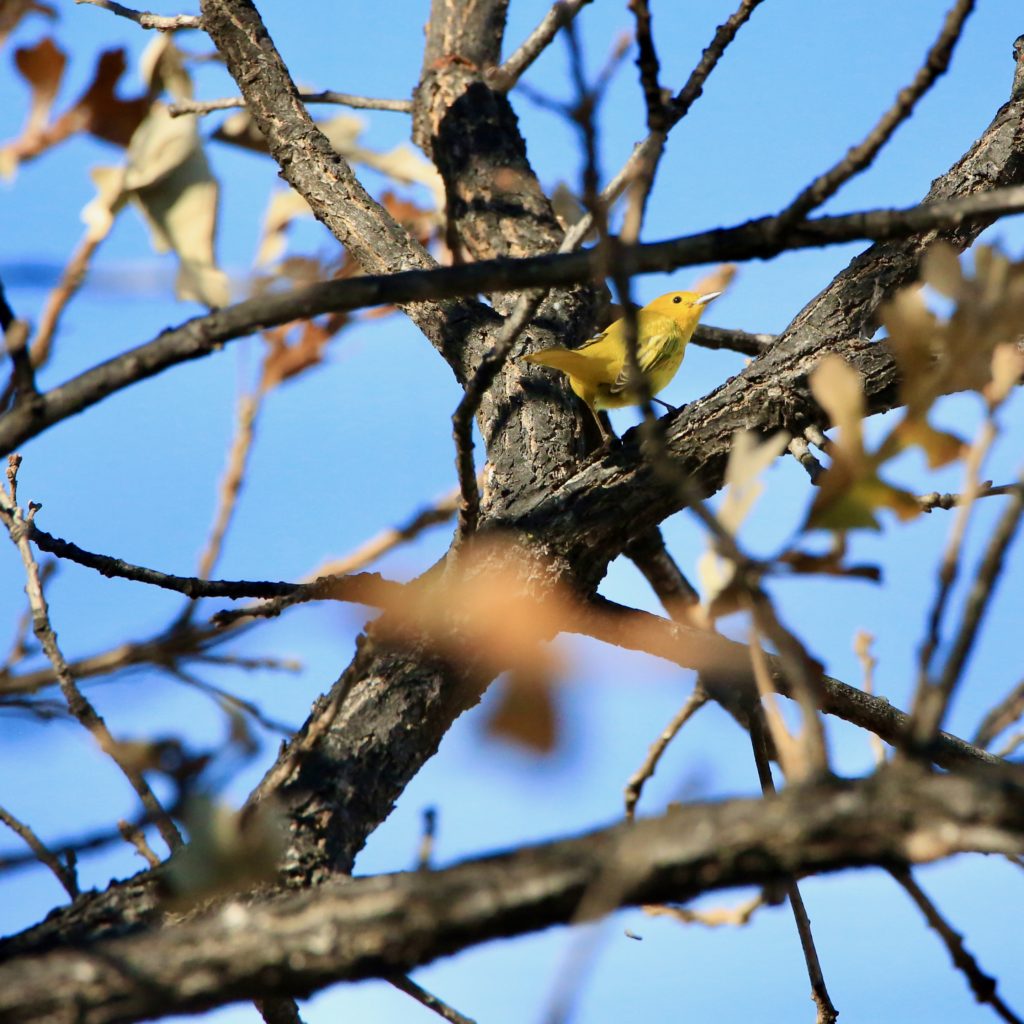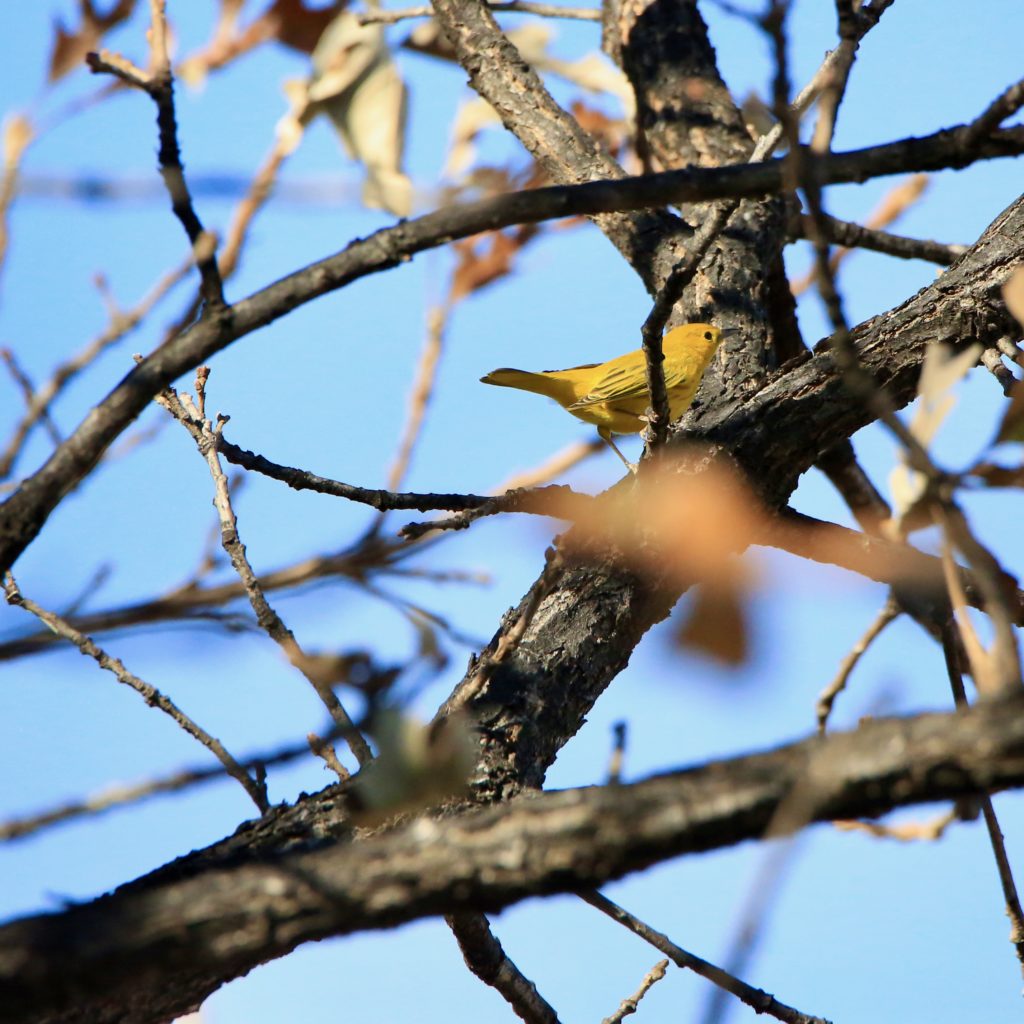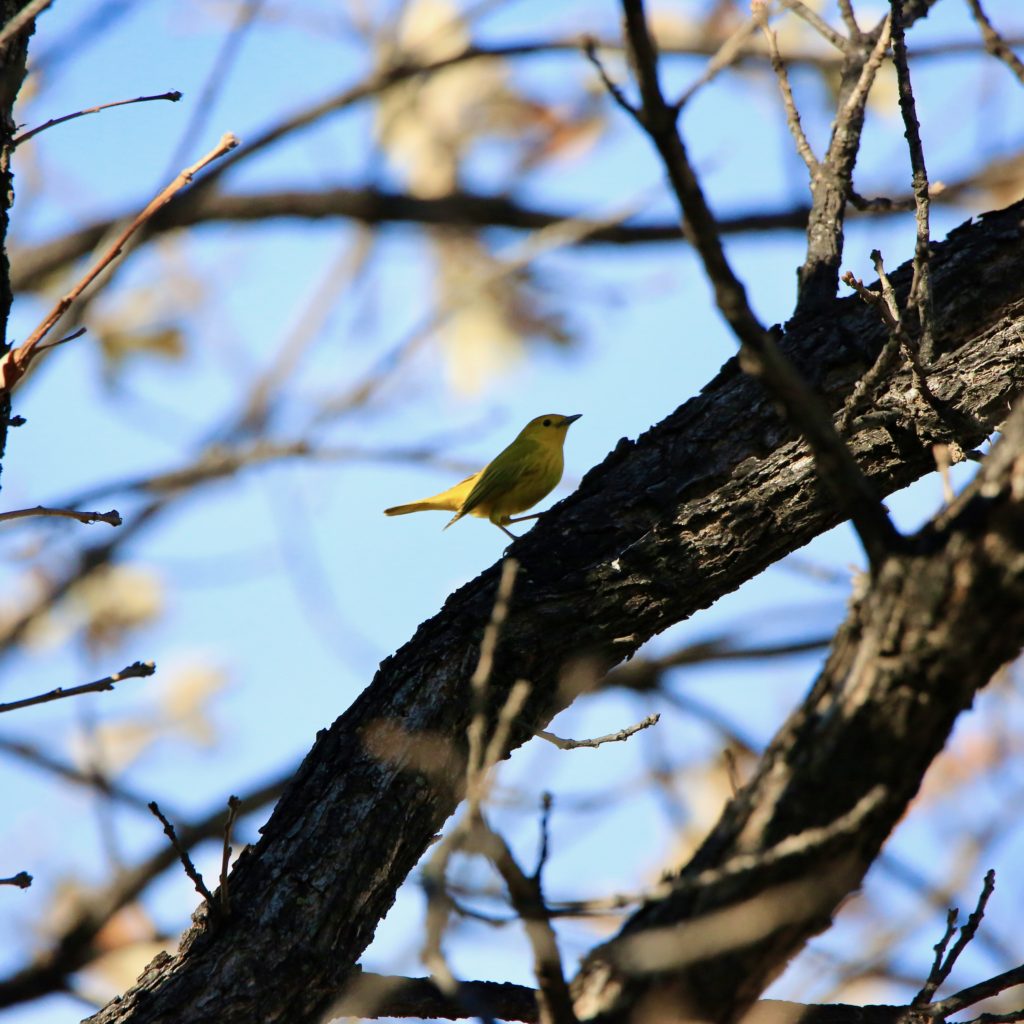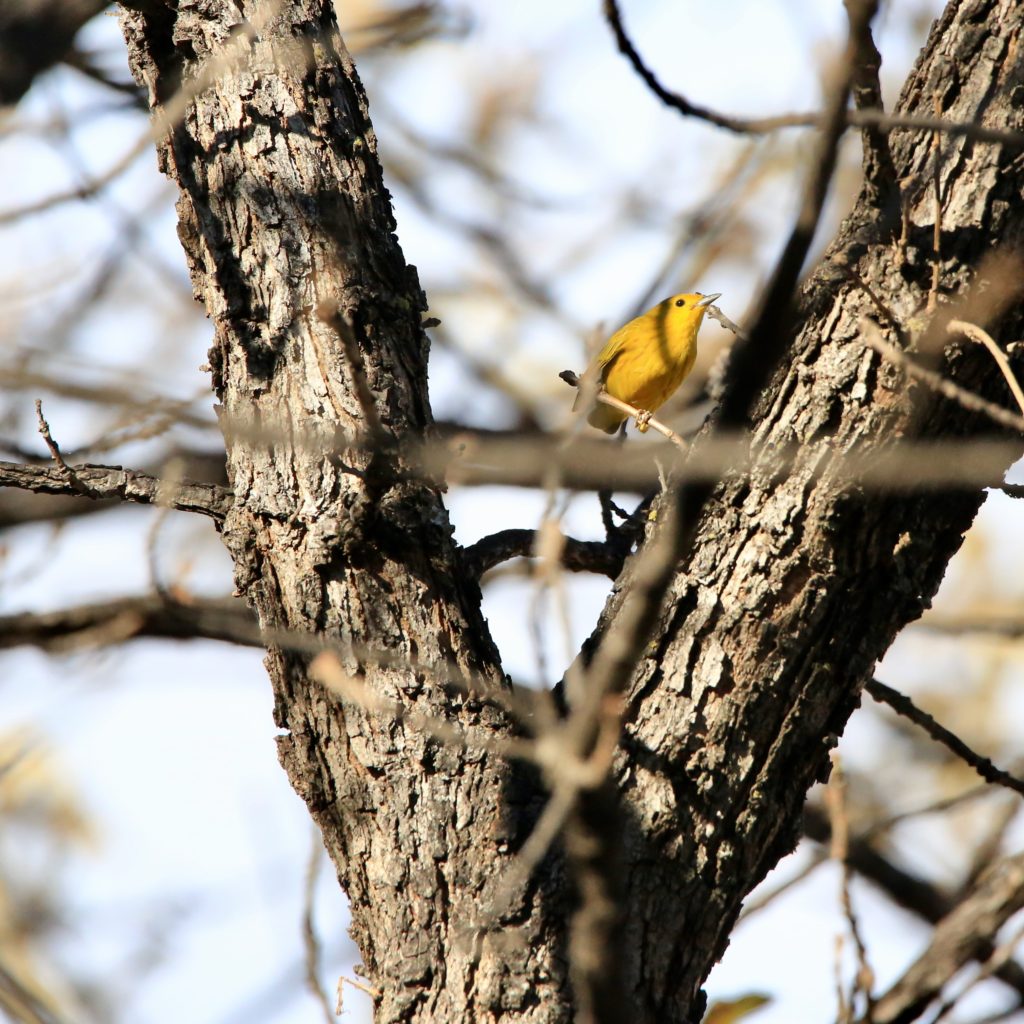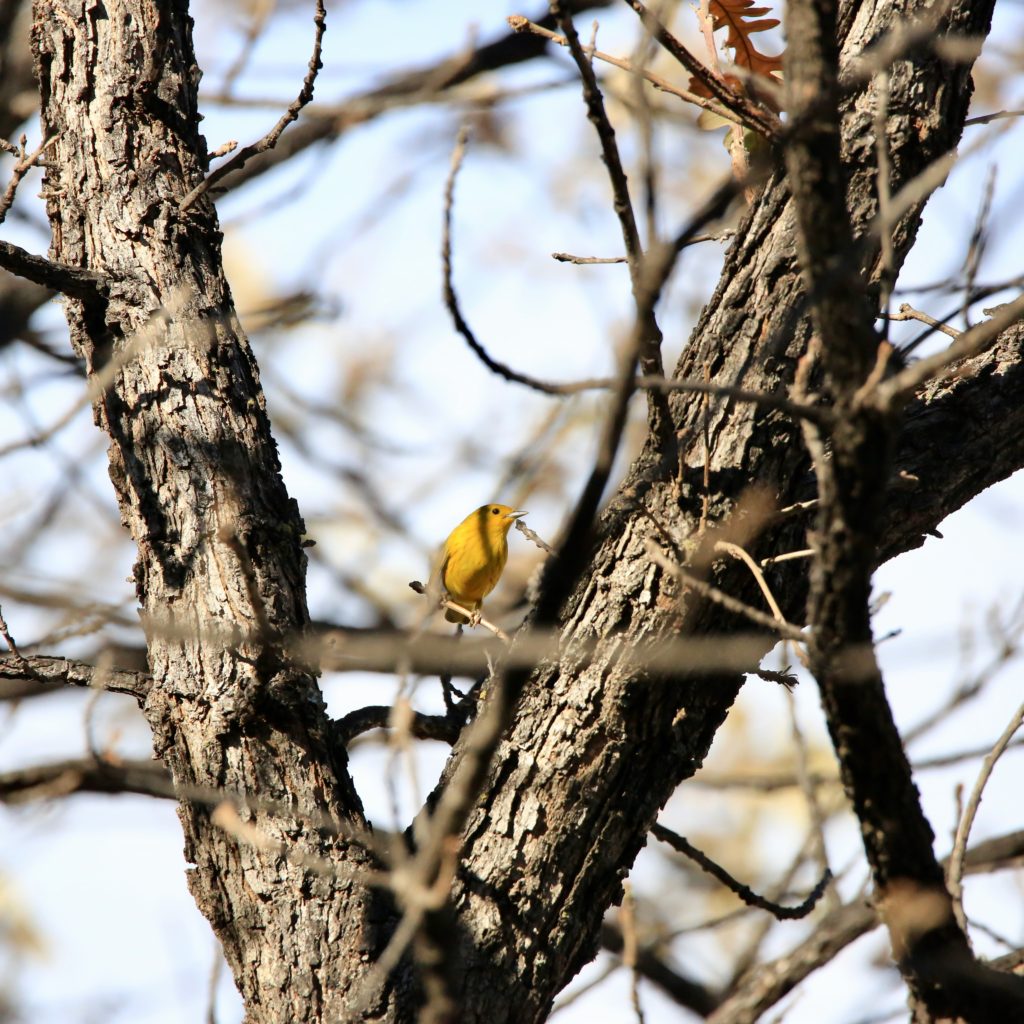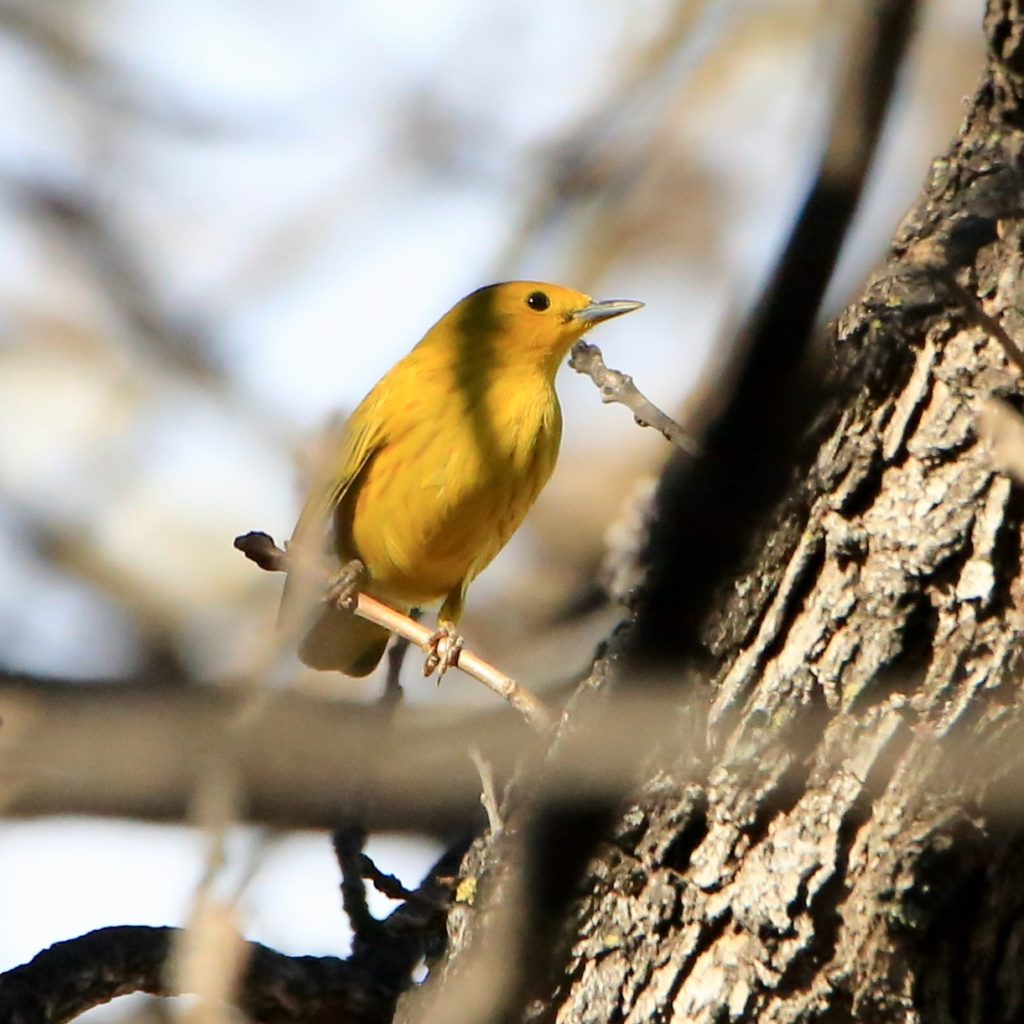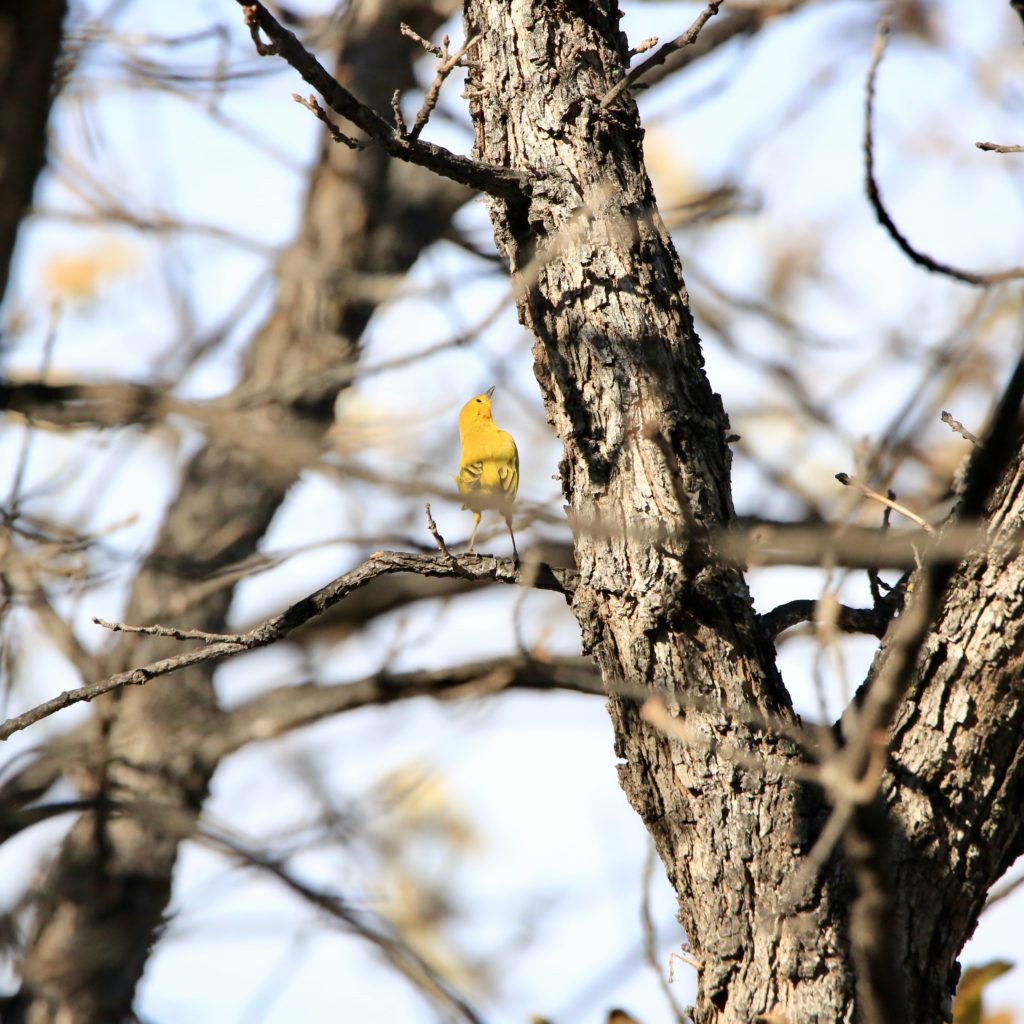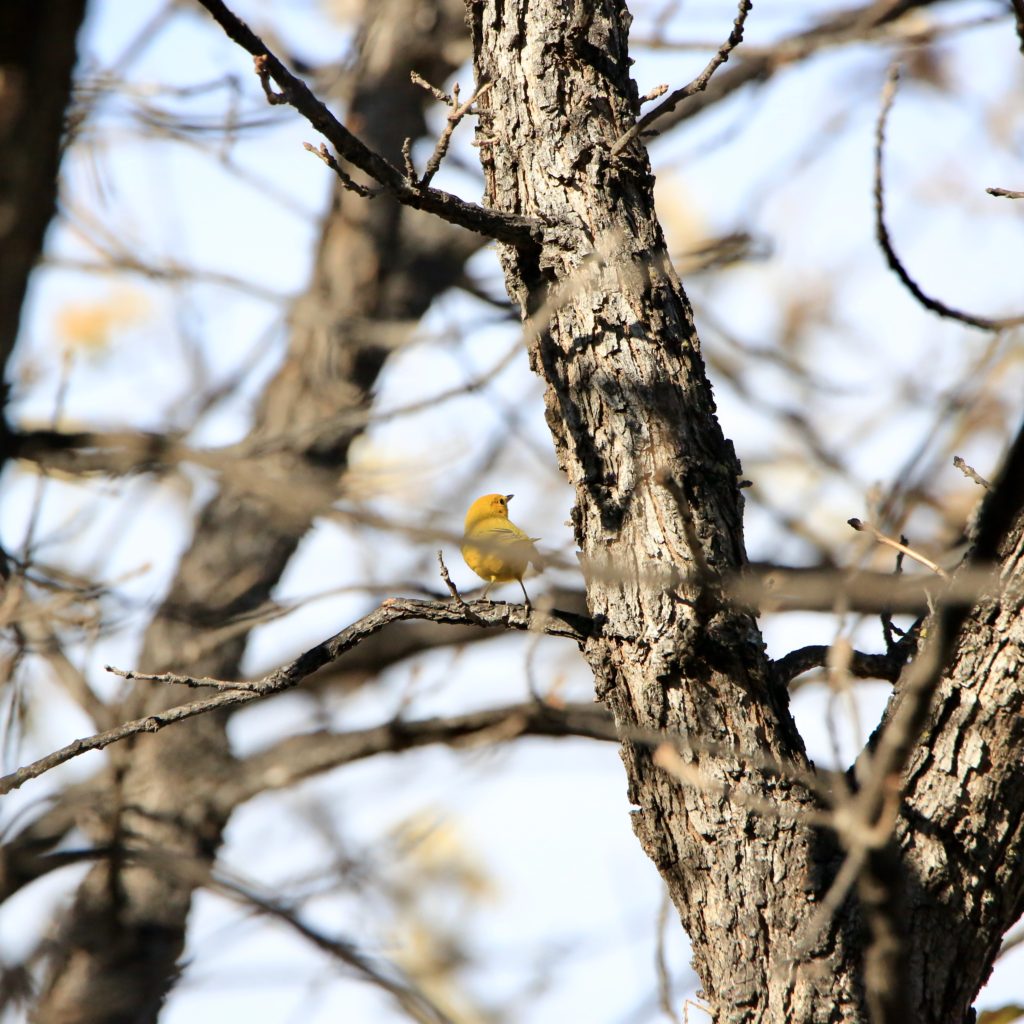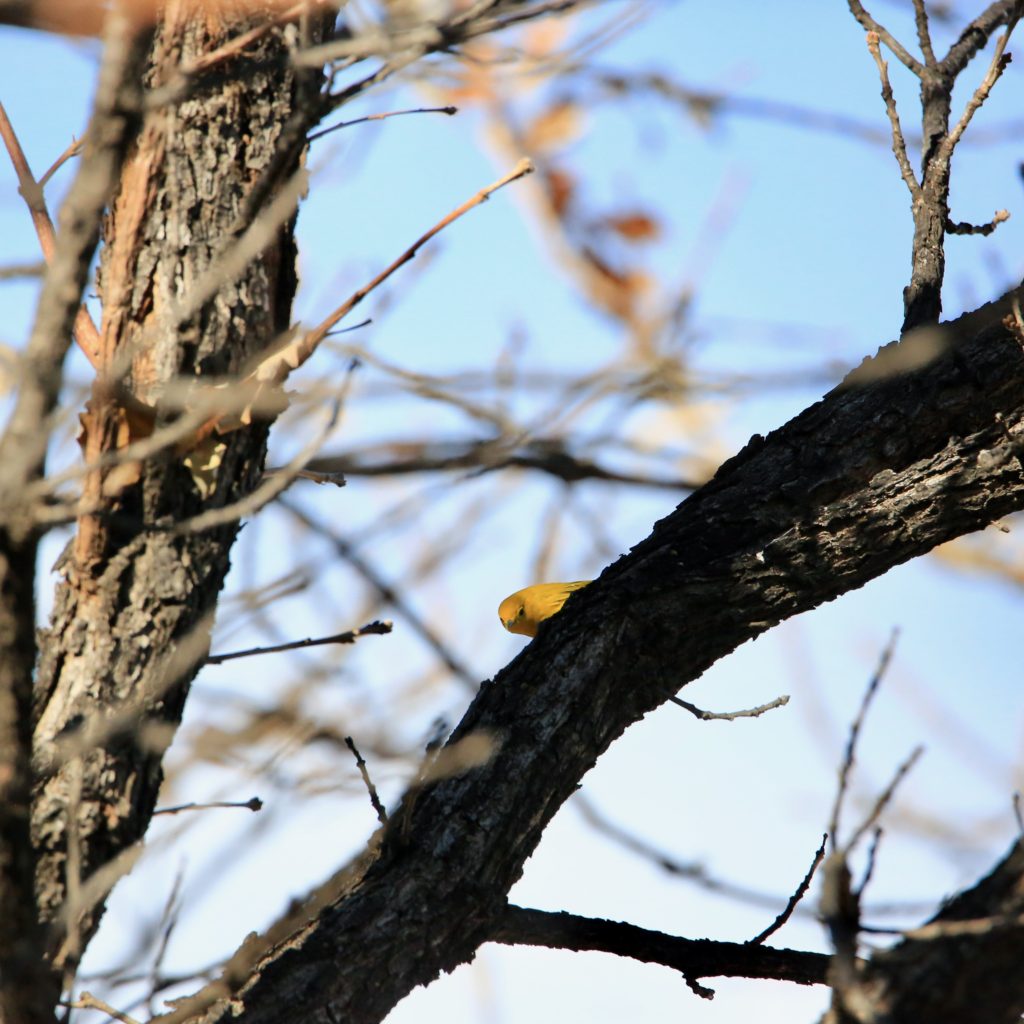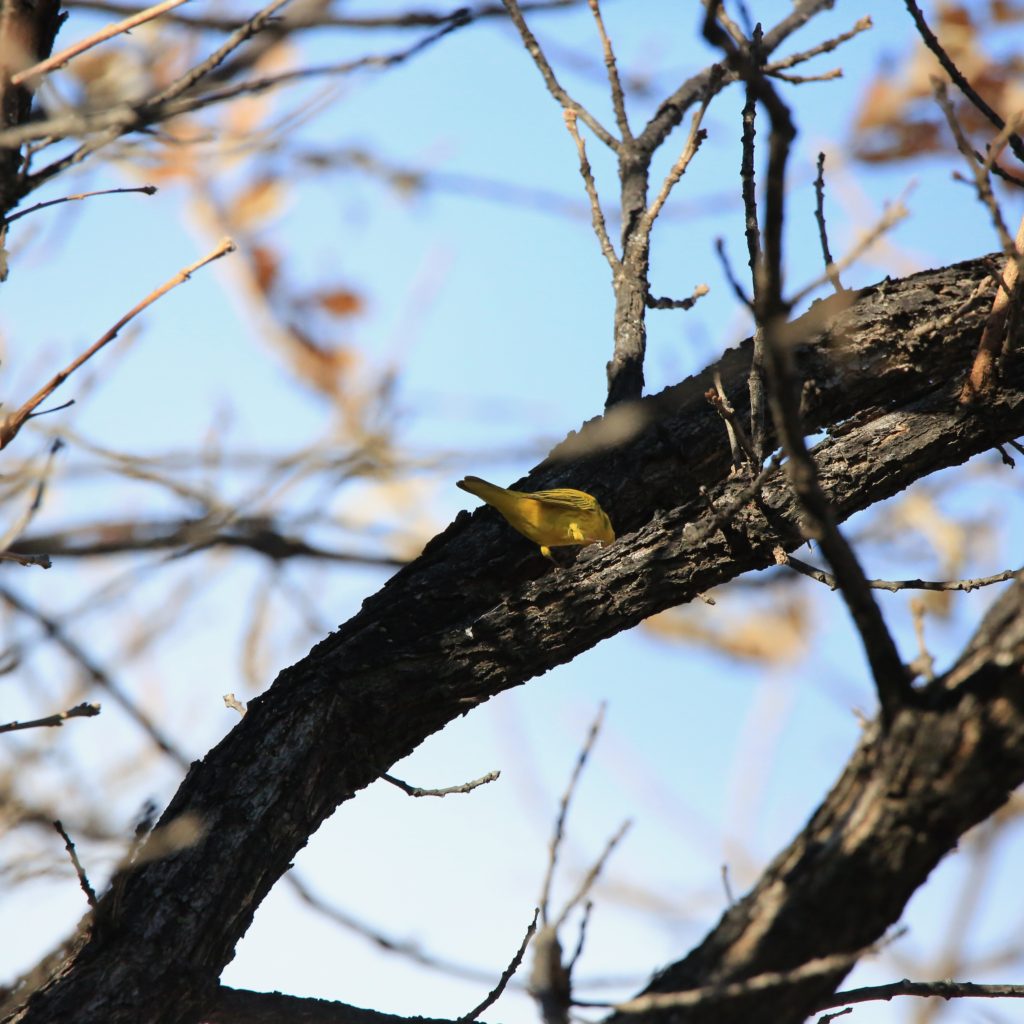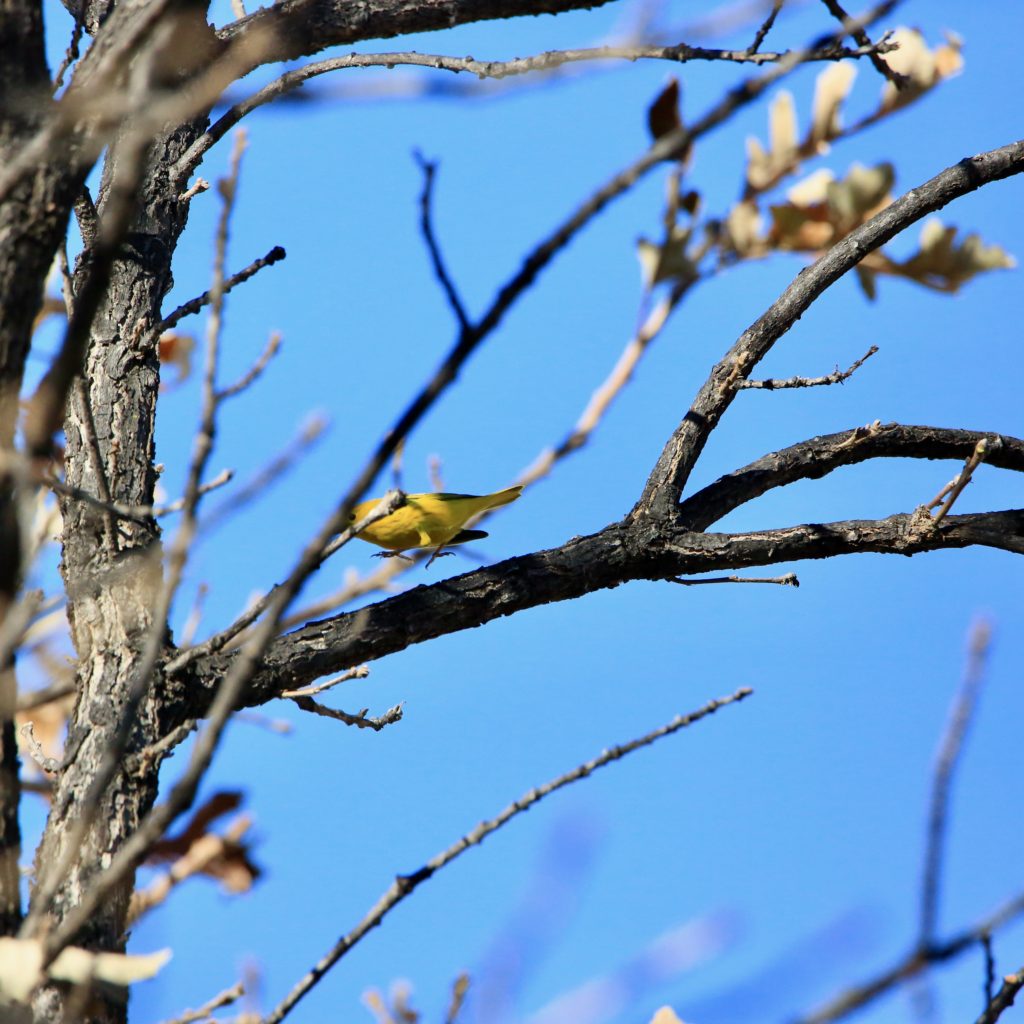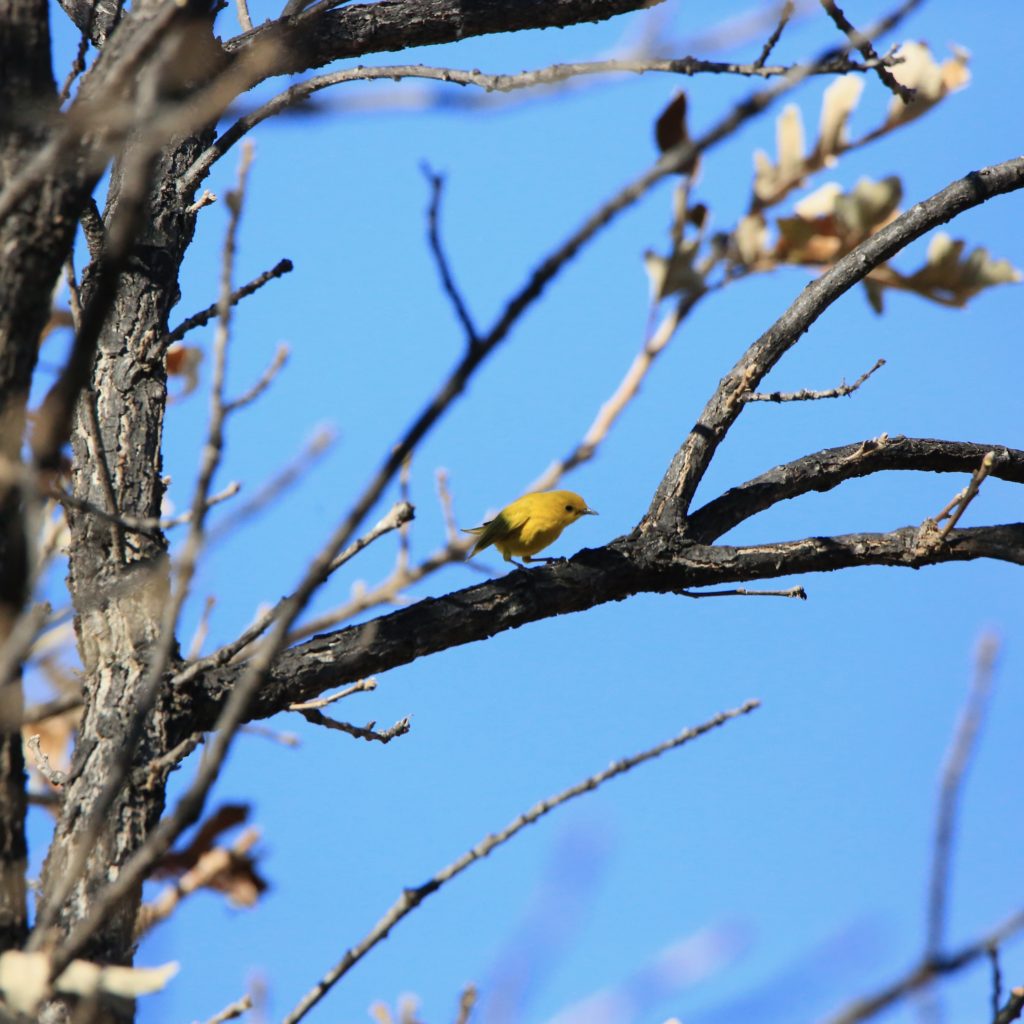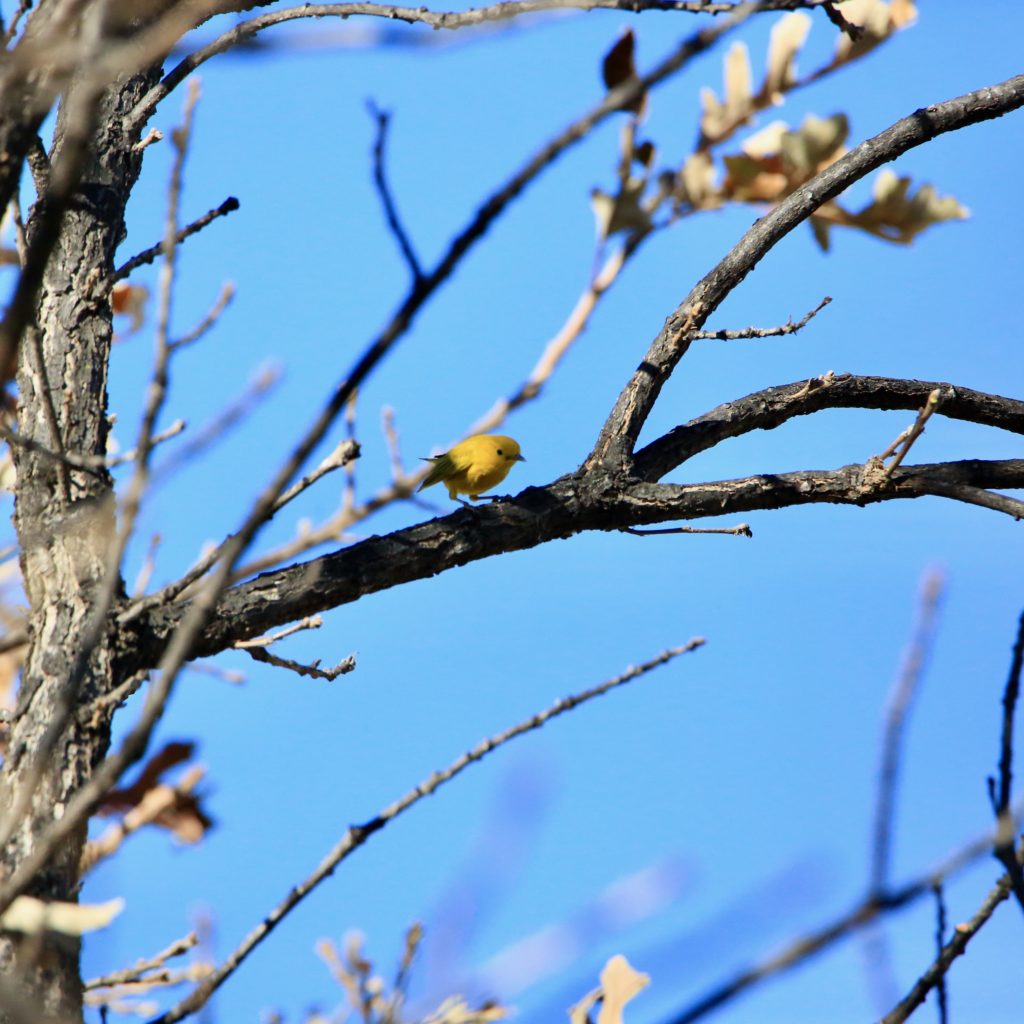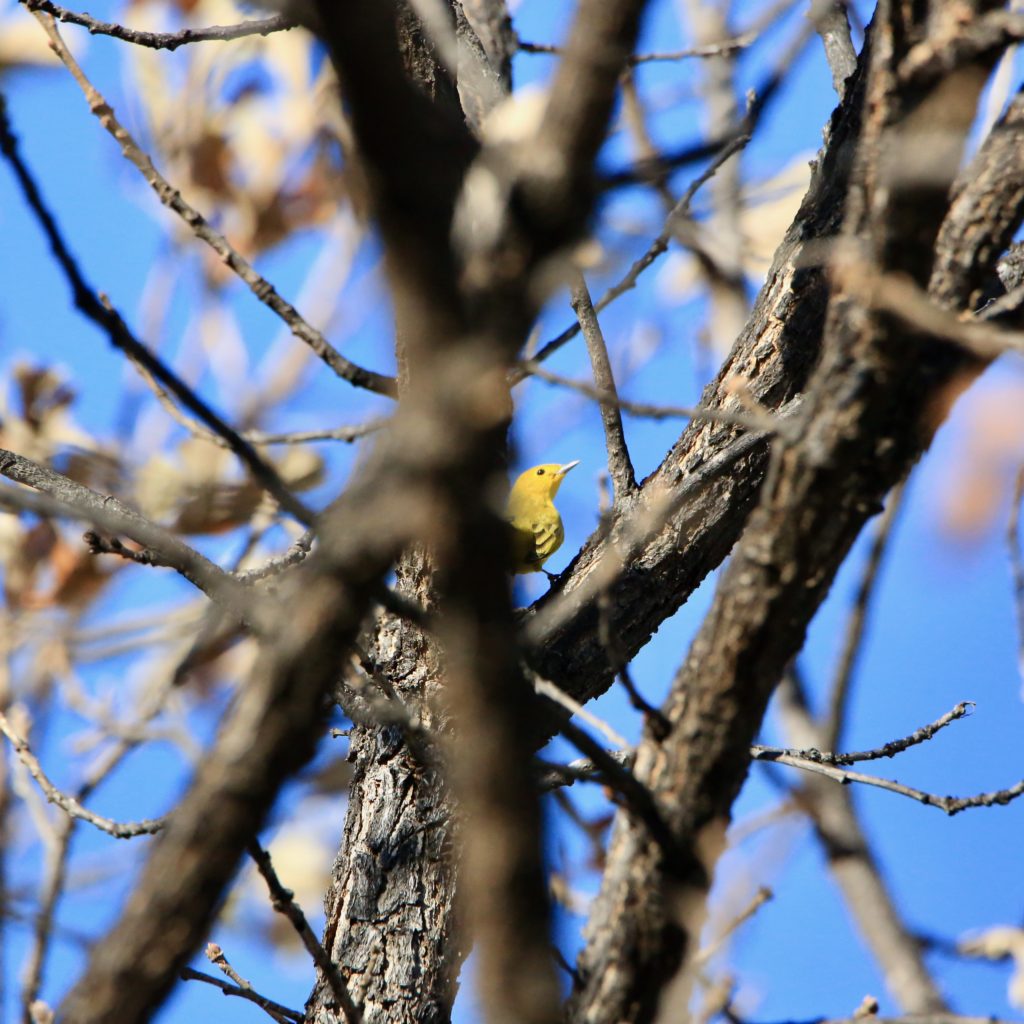
About 50 species of Warblers have been spotted in America to date. Yet, none of them are as easy as the eye with attractive color combinations like the Yellow Warbler. They pretty much own all of North America, with the male Yellow Warblers singing their songs among wet thickets and willows. You might see some of this famous side around the roadside of North America as well.
About Yellow Warblers
The female Yellow Warblers have duller colors to show than the males, but the warmth of yellow color is always there. Their beady black eyes and the faces with no other color but yellow in them certainly makes them distinguishable.
Belonging to the Setophaga genus of New World Warblers, you can not learn about warblers if you don’t start with this species. Today, we will include:
- Yellow Warblers color pattern, anatomy, and size
- Yellow Warblers song, nesting, and life cycle
- Yellow Warblers habitat, range and migration, and behavior
Yellow Warblers Color Pattern
When we talk about the color patterns of Yellow Warblers, well, does not it become apparent that there would be lots of yellow colors involved. The base color of both male and female Yellow Warblers is uniformly yellow.
While you can find other colors on their plumage, it only occurs over the shade of yellow that seems to run all over their body except the legs and the bill. The back has shades of green on them for adult males, also spilling over to the wings.
The tail continues to remain uniquely yellow. On the chest of male Yellow Warblers, you will find chestnut streaks.
The adult female Yellow Warblers share the same colors for the most part. However, the back is more yellow-green than green streaked over it. The wings are also a combination of yellow and dull black color.
However, they mostly have yellow on their chest and no sign of the chestnut color found on their male counterpart. The underparts are also yellow, and the bills are black in both cases. The legs are mostly chestnut shade ones for both males and females of the species.
Description And Identification
There are lots of ways of identifying Yellow Warblers. You can pay attention to the song. If these songs are a staccato of sweet noises, each lasting for a second, you can assume a Yellow Warbler is around you.
If you hear the song and think the sound is sweet and lovely, you might be pretty close to meeting them. Then, if you combine the pull of this song with the Yellow Warbler’s visual, well, you have found one.
The small songbird you have come across, does it have a bright yellow body? Is the base of the entire body yellow color with black beady eyes? If it is a male warbler, maybe there are chestnut streaks on the chest?
If it is a female Yellow warbler, maybe you see an ordinary chest of yellow? Well, then the green on the back and wings will give it away.
Also, do they seem happy to be around the tree branches and looking for insects? That is another indication. Yellow warblers might be the easiest to spot out of most warbler species in North America. As long as you have the description right, you should be able to identify them with a single glance.
Yellow Warbler Song
A series of whistles is the best way to describe the songs of Yellow Warblers. The male warbler primarily sings a continuous 6 to 10 notes occurring one after the other. Unlike most warblers, the pitch is pleasant and sweet sounding.
The notes go through changes even in the 1 second it takes to finishing them, accelerating gradually before ending on a high note. The melody is so sweet that most humans that have listened to it have claimed it sounds like the birds are proclaiming they are indeed lovely.
In spring and the early hours of summer in the morning, this song is something you will commonly hear all around you, especially in the woods. In a minute, they sing this series of notes as much as ten times.
Yellow Warblers have a plethora of short notes they can use to communicate. Some of these notes are metallic, while others have a buzzy, trilling quality to them. Male Yellow Warblers might even switch between these short notes and their traditional song.
When the female warbler hears the male warbler’s song, she is sometimes compelled to answer with a high pitch call of her own. When they are defending a territory, they make a hissing, high pitch sound. They fight off cowbirds with a harsh “seet” sound.
Yellow Warbler Size
Yellow Warblers are a small species. It is a fact that simply can not be contested. They have even proportions, though, with rounded heads and tails that are about medium in length.
The bill, which is straight and thin, is considered large for the body of a warbler. American Goldfinches are smaller than this species. Yet, a member of their species, Yellow-rumped warbler, can gladly boast about being larger.
Like most warblers, the length seems to stop somewhere around 13 cm. They are quite slim and only turn out to be 11 g in most cases. The wingspan can be as short as 16 cm or medium in length as 20 cm.
Yellow Warbler Behavior
The foraging attempts of Yellow Warblers are concentrated on the thin branches sound in small trees and shrubs. They pick out insects as they move along or hover for a short period to glean one from the leaves.
When they are in their territory, the male would perch on top of a tree or bush and begin singing. As they are in the middle of establishing their colony, they might do a circle flight. This flight is when they take on a semi-circular route and fly horizontally towards a neighboring female or male Yellow Warbler.
Then, the flight might slow down in pace when returning, though the wingbeats will continue to be rapid. They do so when they have to create some distance between a male rival or a female they are courting.
If the territorial fights escalate, the male might start singing towards each other. The song often breaks into a call or gets quieter as they begin to chase after each other. Typically, Yellow Warblers in nature and the pair they have formed could last more than one season.
They can make their way towards each other next season. The nesting territories also have to be defended from not only Yellow Warblers but also other bird species.
What Yellow Warbler Eat
Insects. It is always insects with warblers, and the prototype warbler like Yellow Warblers are no exception. About two-thirds of the insects they feed on most probably consists of caterpillars alone.
Moths, beetles, mayflies, treehoppers make up for the other one third. Spiders sneak into the diet sometimes. In winter, they give berries a go. It is usually the last resort if they can not find any insect and need to keep their energy up.
Where Yellow Warbler Live And Habitat
Thickets appear to be the favorite place for Yellow Warblers during the breeding season. Other chosen sites would include disturbed areas or where the habitats have been going through regeneration. The forest edges along wetlands and streams are a favorite for them.
Often, you can find them perched on top of a willow. That does not mean that trees like aspen trees, located in the Rockies or the birch stands of Tundras, are neglected. On the east, at the edge of some fields, they are seen hopping about orchards, Adler, or even blueberry bogs.
At least a 9000 feet elevation is maintained by them while in the west. On wintering grounds, you will spot them on marshes, dry scrubs, and mangrove forests. While they prefer low wetlands during this season, it is not unusual for some of them to reach 8500 feet.
Range and Migration
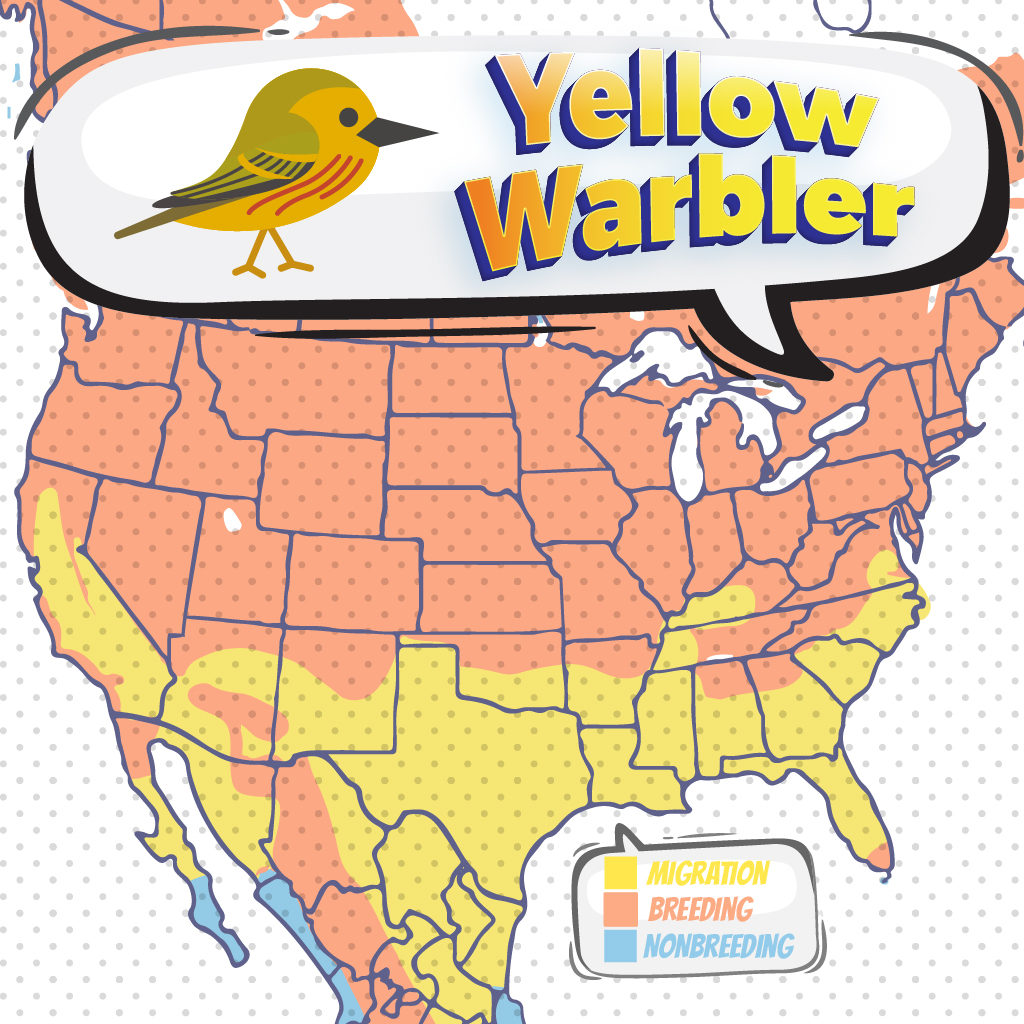
Yellow Warblers are long-distance migrants. Their breeding ground is distributed all across North America and a large part of Central America. During winter, they travel to the north of South America and some places in Central America. For both spring and fall migration, they begin their journey before other warblers.
Yellow Warbler Lifecycle
They produce a generous amount of eggs in a brood. That is, they lay about 4 to 5 eggs. Instead of the creamy whiteness expected in all warblers, the eggs of Yellow Warblers are more white with a green tint.
Brown, olive, or gray marks some places on the eggs. Only the female warblers incubate the eggs, which should not be a surprise in any way. The incubation period is of the usual round of 11 to 12 days.
During the incubation period, male warblers gather food and feed their female partner. Cowbirds terrorize them a lot. To defend themselves against cowbirds’ parasitic ways, they might even build a nest on top of the eggs left behind by cowbirds. They might desert the nest entirely as well.
When the eggs hatch, they are fed by both parents. Yet, the female seems to do a better job of gathering food. After 9 to 12 days, the youngins become fit for leaving the nest.
Nesting
The male Yellow Warblers defend the territories where they will nest by singing. Sometimes, this is accompanied by the flutter of wings or other performances. The courting takes place for about 1 to 4 days, where the male pursues the female consistently.
They make their nest on the curve of branches of shrubs and other small trees. It can be about 2’ above ground or even 60’. There is no limit on how high they are willing to nest. The female warbler builds the nest.
They use shredded bark, weed stalks, and grass to make a small, open cup nest. The warblers do the lining with fur or grass. The male follows the female to where she is building the nest. Rarely, but still, they do help out with the nest from time to time.
The female Yellow Warblers have no shame about stealing material from the nests of other warblers.
Anatomy of a Yellow Warbler
Yellow Warblers are small birds with mostly an even distribution of proportions. They have a rounded head, and the belly area is not as rounded as it is long and maybe a bit plump. There is a noticeable distinction in their neck area, though it is not by far much.
The bills are long and heavy compared to their body, and the eyes are large compared to their face. You might also notice the thin, skinny legs and the short wings. The legs are not all that long either if you compare it to other warblers.
Ornithology
Final Thoughts
If you are looking for Yellow Warblers in North America, that might be the most effortless task you have ever done. Not that birding would ever be easy, but the rewards are undoubtedly worth it. In this case, the prizes involve spotting a pretty bird you can take pictures of if you are lucky.
In summer and spring, they belong amongst the warblers who you can hear all around you. The song is not hard to remember. It is mostly whistling, tumbling one after the other, producing a sound like the birds are saying they are sweet.
Your best chance for spotting them would be on willow or other slightly small trees. From a conservation point of view, they are secure for now. As their preference seems to be forest edges and even roadsides, the loss of forestlands does not seem to be affecting them too heavily for the time being.
As of the moment, you can go birding and search for this bird without any extra pressure. You are sure to come across one soon.
Bird Watching Academy & Camp Subscription Boxes
At Bird Watching Academy & Camp we help kids, youth, and adults get excited and involved in bird watching. We have several monthly subscription boxes that you can subscribe to. Our monthly subscription boxes help kids, youth, and adults learn about birds, bird watching, and bird conservation.
Bird Watching Binoculars for Identifying Yellow Warblers
The most common types of bird watching binoculars for viewing Yellow Warblers are 8×21 binoculars and 10×42 binoculars. Bird Watching Academy & Camp sells really nice 8×21 binoculars and 10×42 binoculars. You can view and purchase them here.
Yellow Warbler T-shirts
If you love the Yellow Warbler you should purchase a Bird Watching Academy & Camp T-shirt. To help support bird conservation we donate 10 percent to bird conservation activities.
Yellow Warbler Iron On Patches
Kids, Youth, and Adults love to collect our Bird Watching Academy & Camp iron on patches. Our bird watching patches help you keep track of the birds you have seen an identified. You can also display the patches on our Bird Watching Academy & Camp banners.
The Yellow Warbler is a great iron on patch to start your collection with. The patches are durable and can be sewn on or ironed on to just about anything.
Yellow Warbler Stickers
Stickers are a great way for you to display your love for bird watching and the Yellow Warbler. We sell a monthly subscription sticker pack. The sticker packs have 12 bird stickers. These sticker packs will help your kids learn new birds every month.
Bird Feeders For Yellow Warbler
There are many types of bird feeders. Here are our favorite bird feeders for your backyard. We use all of these bird feeders currently. Kids will have a great time watching birds eat at these bird feeders. Using this collection of bird feeders will provide a wide variety and many types of birds.
Best Bird Houses for Yellow Warbler
There are many types of bird houses. Building a bird house is always fun but can be frustrating. These 4 bird houses have become our favorites. Getting a bird house for kids to watch birds grow is always fun. We spent a little extra money on these bird houses but they have been worth the higher price and look great.
Yellow Warbler Activities for Kids
We thought a fun perler bead pattern would be fun for kids. Please download and print with 100% scale to fit perfectly with perler bead patterns.


